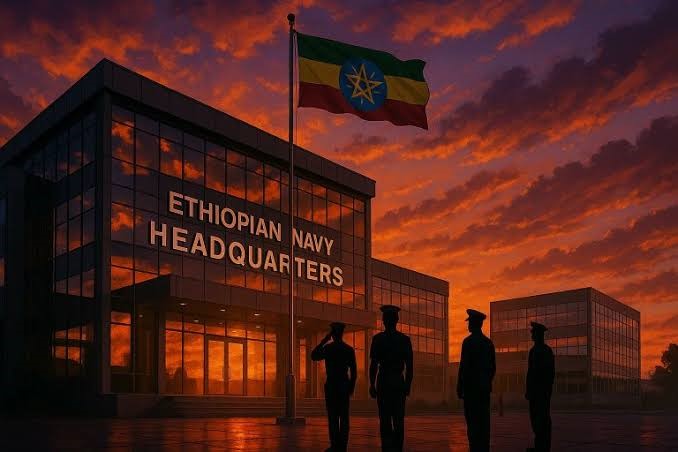
11
Jun
Ethiopia Finalizing Naval Headquarters in Push for Regional Stability and Maritime Readiness
Ethiopia is nearing completion of its new Navy Headquarters in the capital, Addis Ababa – a bold and strategic step in the country’s efforts to reestablish naval capabilities more than three decades after becoming landlocked. The facility, which spans three hectares, includes a modern four-story complex housing administrative offices, medical services, training halls, and support infrastructure. Once operational, it will serve as the central command for Ethiopia’s revived naval program and function in coordination with training centers such as the one in Bishoftu.
Though it lost direct access to the sea following Eritrea’s secession in 1993, Ethiopia has consistently emphasized that maritime security remains vital to its national interest. The country relies heavily on ports in Djibouti and Sudan for more than 90% of its trade, and officials argue that securing access to regional waters is essential for both economic stability and national sovereignty. In this context, the establishment of a navy is not about projecting power offshore, but about building resilience in a volatile region where maritime threats increasingly affect inland nations.
Ethiopia’s growing emphasis on maritime readiness complements its well-established legacy in international peacekeeping and regional security. Over the past two decades, Ethiopia has consistently ranked among the top contributors to United Nations and African Union missions, deploying thousands of troops to stabilize conflict zones in Sudan, Somalia, and South Sudan. Its role in AMISOM and UNMISS, as well as in regional diplomacy and cross-border operations, has positioned it as a key actor in peace and security efforts across the Horn of Africa.
Building a navy is seen as the next logical step in Ethiopia’s evolution as a regional security provider. With piracy, trafficking, arms smuggling, and geopolitical tensions increasing across the Red Sea and Gulf of Aden, Ethiopia recognizes that landlocked status does not insulate a country from maritime instability. The development of a naval force, supported by strategic cooperation with neighboring coastal states, is intended to strengthen Ethiopia’s contribution to regional stability while ensuring that trade corridors remain secure and accessible.
The construction of the Navy Headquarters also reflects a more comprehensive approach to security – one that understands the deep interconnection between land and sea in the Horn of Africa. In an era where threats are increasingly transnational and multidimensional, Ethiopia is positioning itself to respond not only to traditional military challenges but also to non-state threats that disrupt economies and undermine sovereignty. By developing naval capabilities, Ethiopia is reinforcing its capacity to engage with international partners on shared security goals while bolstering its ability to protect its own critical infrastructure and supply lines.
Ethiopia’s maritime ambitions are grounded in pragmatism, not symbolism. Officials have reiterated that the navy will operate in coordination with regional and international frameworks, and that Ethiopia remains committed to principles of cooperation, mutual respect, and peaceful engagement. As global powers expand their military footprints in the Red Sea basin, Ethiopia’s approach offers an African-led model of responsible defense development – one that prioritizes stability, integration, and long-term readiness.
As the Navy Headquarters nears completion, Ethiopia is sending a clear message: that responsible statehood in the 21st century means preparing for the security challenges of both land and sea. In doing so, it affirms its role as a nation that not only safeguards its own interests but contributes meaningfully to the peace and stability of the broader region.










